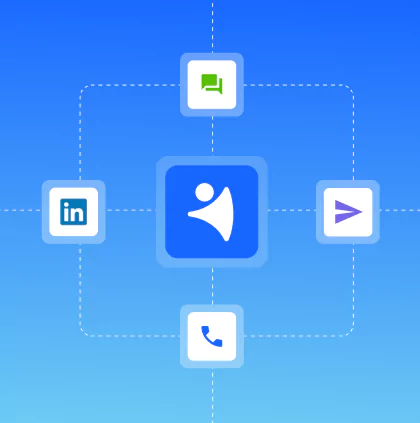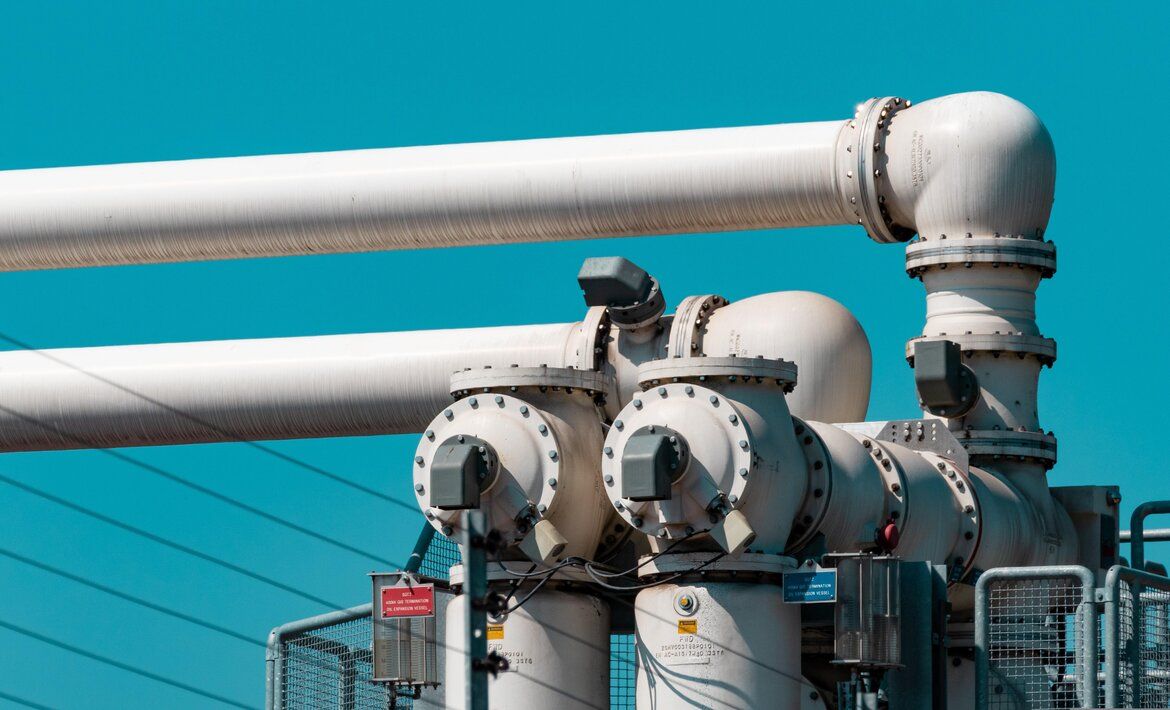Do you have problems with sales forecasts? Do you know where you have bottlenecks in the sales processes and how many active deals you have? If there's no visibility into the state of sales, you might need a sales pipeline to make your sales process more successful.
A sales pipeline is something that can help you in your sales efforts, letting you prioritise and analyse sales activities. It visualises your sales process, helping you set all the necessary stages and measure your progress.
Often, sales pipelines are built in CRM systems, but can also be built in Spreadsheets if you have few leads. While it might be challenging to start using a sales pipeline to track your success, it is highly rewarding as it might bring new and exciting opportunities to your business.
Read this article to find out what a sales pipeline is, why you might need it, which sales pipeline stages exist, how to build a sales pipeline in CRM, and key metrics of a sales pipeline.
What is a sales pipeline?
The sales pipeline is a visual representation of the whole sales process. It shows where your prospects, leads, and customers are in their buying journey and how they progress through it. With a help of a sales pipeline, sales managers and representatives can manage the number of deals, determine potential revenue, find out the bottlenecks, and see the deals that require additional attention to be closed. A sales pipeline lets you measure the performance of your sales representatives.
Why do salespeople need a sales pipeline?
Creating a sales pipeline can bring you many benefits, but let’s focus on the main four ones.
- Stay on top of the sales process. With a sales pipeline, track how much time it takes to close a deal, predict the number of deals you are about to close in a certain period of time, see what steps lead to success, and never forget to send a follow-up to a customer.
- See how your team performs: A sales pipeline tracks sales activities of your sales representatives and their performance towards business goals. You can see how your team follows the stages of your sales pipeline, which we’ll discuss later in the article. Pipeline metrics visualise how fast your salespeople move your leads from one stage to another.
- Predict profit. Salespeople can use a sales pipeline to track the progress toward desired revenue goals, which helps plan monthly and quarterly budgets beforehand, and see whether the goals are achieved.
- Prevent problems. A sales pipeline allows to detect broken processes and prevent problems like losing revenue: for example, you changed the content of the email sequences and the conversion rate from Stage New to Stage Negotiation decreased.
Now that we discussed the pros of a sales pipeline, it is time to move on to the most important part: The stages and sales pipeline building step-by-step.
What are the sales pipeline stages?
There is no such thing as a universal sales pipeline. It looks different for every business depending on its sales process, the type of company, and other specifics. However, it is still possible to set the most common sales pipeline stages which are mutual for many businesses.
- Initial research and lead generation. You might acquire potential customers through different channels. Before you contact your leads, it’s important to create a buyer persona.
- Qualification. This step lets you identify which leads are a good fit for your business, and which are not. During qualification, you find out whether leads need your product.
- Contact. It’s time to contact them via a message or a discovery call. During the initial contact, you need to find out current pain points and prominent challenges for a company.
- Demo. Some customers require a product demo to proceedl. Here, we discuss the pains and needs of your prospect in order to find a way your company may help them.
- Negotiation. Find out what your customer needs. Be ready to make some adjustments to your solution if necessary and always go the extra mile for your potential customer.
- Proposal. When you reach a point of consensus with a prospect, you may send them your sales proposal to be reviewed and discussed in detail.
- Closing the deal. Finally, the last point of any sales pipeline should be closing the deal, signing the contract, and providing the goods.
During your sales pipeline, you might face the need to follow up. Sometimes, your sales pipeline stages may require not only one follow-up, but several. Brevet states that 80% of sales require five follow-ups to close the deal. Be persuasive but never obtrusive, and you will achieve the goal. The optimal time to send a follow-up is usually from three to five days.
How to build a sales pipeline
Now that you know the stages in a sales pipeline, you might wonder how to build such a pipeline. We’ve got you covered with the below mentioned steps.
Create a buyer persona
The buyer persona is a representation of your ideal customer. Imagine how you see your perfect client, what their interests and pain points are, what outcomes they are going to achieve with your product, and how you can meet their needs. For that, you need to analyze your target audience. Creating buyer persona helps you understand who your product is for and what your approach should be.
Generate leads
Lead generation is the process of finding real, suitable buyers for your product. There are a bunch of different ways you might generate lead. Inbound leads come from customers contacting you through mediums such as email and web forms. Outbound leads are those that your sales reps find and reach out to on platforms such as LinkedIn.
Set the stages of your sales process
After you’re done with your client’s profile, you need to think of the most common steps you take to close the deals with your leads. Set the stages and transition all of your leads and customers to the stages they belong to. Your stages might vary during the time as you see some good fits to your sales pipeline.
Align stages with sales activities
A sales pipeline is something all of your salespeople use once it’s implemented, so you can make it easier and more motivating for them to use. Set activities associated with each stage in your sales pipeline for your sales representatives so they know what to do and when to send a follow-up to a potential client.
Update the sales pipeline regularly
In order for a sales pipeline to work, you need to motivate your salespeople and team to regularly update it, moving your leads and customers through the stages. You can have your sales pipeline in Spreadsheets if your company is small and you have less than 10 leads. However, if your business is bigger than that, you might need dedicated software, like a CRM system, to make your life easier and automate the processes.
Let’s take a closer look at working with a sales pipeline in CRM.
Build a sales pipeline in CRM
A customer relationship management (CRM) system can optimize your workflow by keeping all customer information in one place, helping you manage and organize it. When it comes to building a sales pipeline, a CRM system gives you pre-set options of a pipeline that you can adjust to your needs. You can even have multiple pipelines if necessary.
Let’s take a look at how to create a sales pipeline in NetHunt CRM...
- Open the ‘Deals’ folder, click on ‘List view’, and group deals by ‘Stage’ field.
- This card view is your sales pipeline, and the stages can be adjusted.
- Hit the ‘Columns’ button to adjust which parameters show up.
- Save the pipeline using the ‘Save view’ button above.
Easy!
Sales pipeline metrics
One of the opportunities that a sales pipeline might bring you is that you can track the metrics with its help. What metrics are we talking about? These include the value, length, the number of deals, and other metrics. Let’s take a closer look.
- The number of deals. Track the number of deals you have at any given moment.
- Deal value. You can see the average value of all of your deals.
- Win rate. (Closed deals [won] ÷ Closed deals [won and lost]) x 100
- Conversion rate.(Total number of conversions ÷ Total number of leads) x 100
- Sales cycle length. Number of days for all deals ÷ Amount of deals in that period
Key takeaways
- There is no universal sales pipeline as it varies business-to-business. Your sales pipeline is unique depending on your company’s features.
- You need to know your customers very well to build a sales pipeline.
- Before the first contact with a potential customer, do your research and know as much as possible about them.
- While you can build your pipeline anywhere, dedicated CRM systems make it easier for you to track, manage, and automate the processes with your sales pipeline.
If you want to try out a CRM tool for building a sales pipeline, you can use NetHunt CRM’s 14-days free trial, and we’re sure you will appreciate how easy-to-use and functional it is.





















 product experts — let's find the best setup for your team
product experts — let's find the best setup for your team